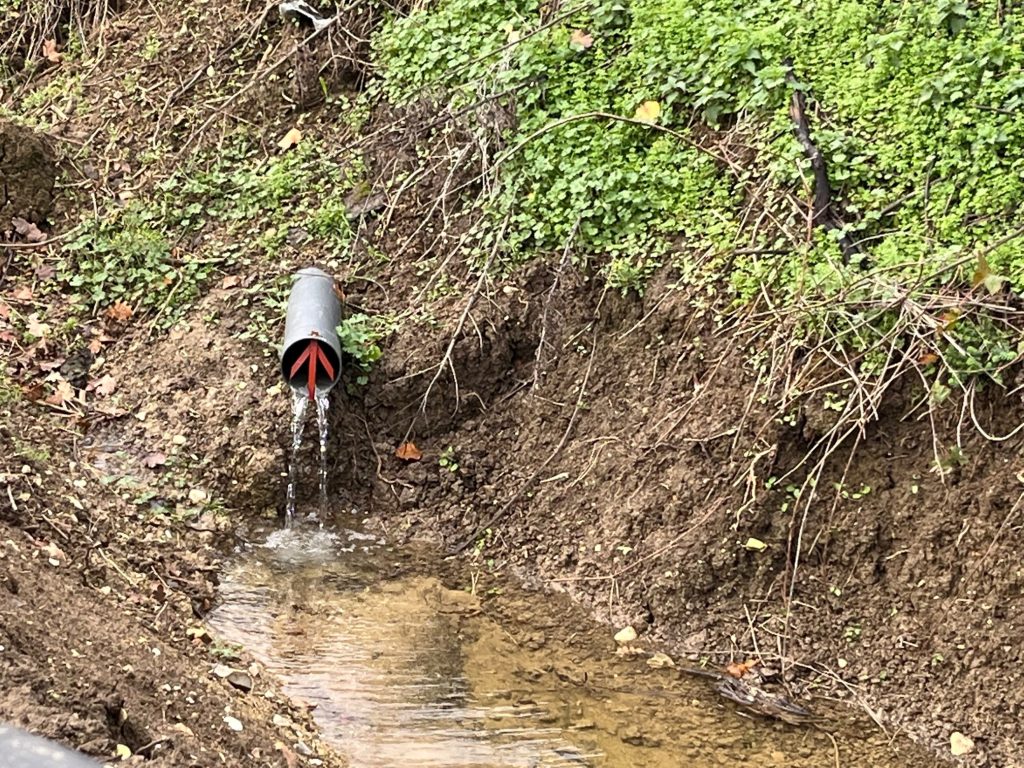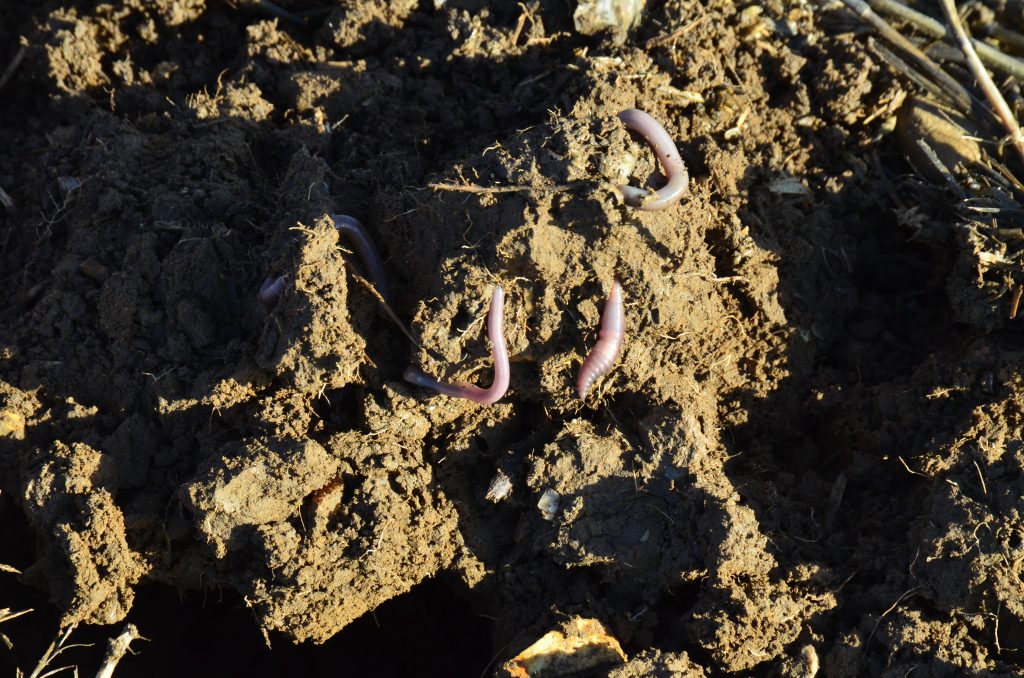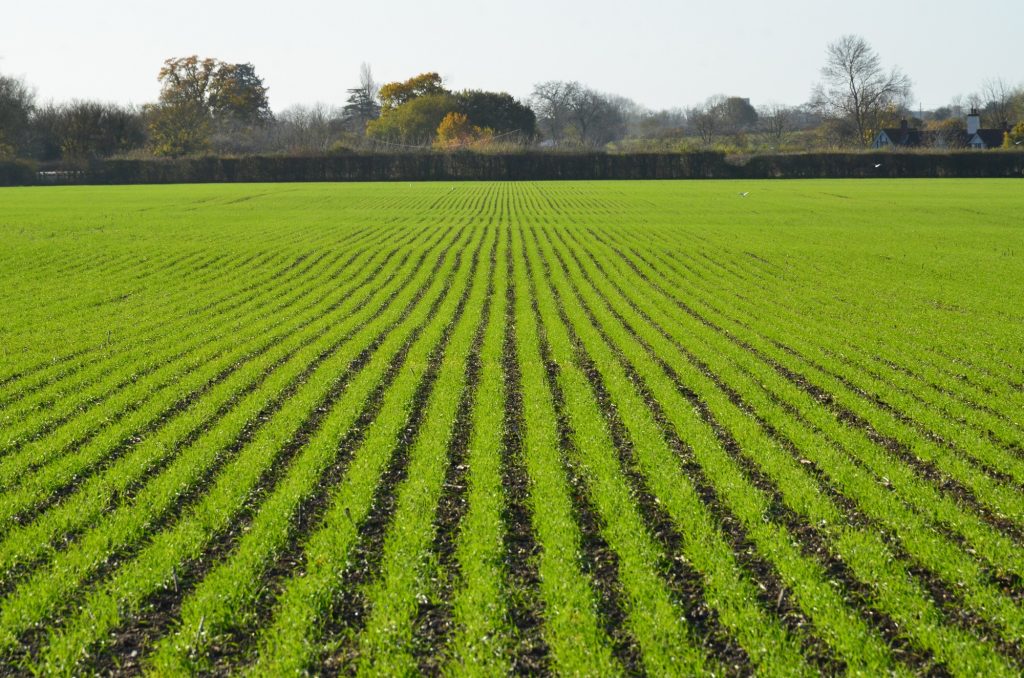Excellent soil health is fundamental for maximum farm productivity
With autumn drilling on the Claydon farm completed and crops developing well, Jeff Claydon, inventor of the Opti-Till® direct strip seeding system, discusses the importance of excellent soil health and the role of effective stubble management in achieving it.
30 November 2022
Excellent soil health is a prerequisite for maximum productivity on any farm. Soils in excellent condition will produce excellent yields and, conversely, those in poor shape will underperform.
The Claydon farm produced cracking yields this year, despite the driest spring/summer in decades and using up to 25% less nitrogen due to soaring prices and restricted availability. Our winter wheat averaged over 10t/ha, oilseed rape 4t/ha, and spring oats 6.11t/ha, so if your own results did not live up to expectations perhaps it is time to consider a different approach.
We operate on a commercial basis and earn our living by working in harmony with Mother Nature. Getting the best from the difficult-to-manage Hanslope series soils is a priority, so recent research data showing that reductions in tillage intensity benefit soil biology and health get my full attention. They confirm that the fundamental principles behind the Claydon Opti-Till® system, which we have used to establish crops since 2002, are correct.
One tell-tale sign of well-structured soils this year was that they did not crack deeply, unlike some I saw on other farms which were over-cultivated and had a dusty consistency, like dry cement powder. Where that was the case, the soil was bone hard when dry, so worms could no longer do their job, then after rain it went to mush and became unworkable. Inevitably, results were poor.
Soil health is a combination of its physical health, biological health, and chemical health, but what exactly do we mean by those terms?
- Biological health relates to soil biodiversity, feeding the soil regularly through plants and organic matter inputs, moving the soil only when you must and diversifying plants in both space and time.
- Physical health involves the texture and structure of the soil, the porosity and pore size distribution, water retention and transmission, together with aeration.
- Chemical health involves maintaining optimum pH, providing plant nutrients in the right amounts, in the right place, at the right time, as well as knowing your textures and mineral buffering capacity to optimally mine this supply of nutrients.
Once these things are right, we need the soil biology, which involves carrying out the right cultivations at the right time and having the right diversity of plants, which can encompass the use of cover crops.
A SYSTEM WITH BENEFITS
A German soil scientist who visited the Claydon farm described our Hanslope Series soil as ‘minute land’, namely that one minute it can be worked without too many issues using appropriate techniques, but the next it becomes unworkable, so timeliness is essential.
The other interesting fact brought to my attention on the Claydon stand at SIMA 2022 in the November was that a 1% increase in soil organic matter increases the amount of water available to the growing crop by 27,000 litres per hectare. That is a staggering amount, so when considering soil health appreciate that it embraces a wide range of factors, from drainage and water retention to worm counts, cultivations, and stubble management.
Claydon Opti-Till® originated in 2002 when wheat prices were under £60/t and for the farm to survive we had to reduce costs without adversely impacting output. Today, the cost of establishing crops using Opti-Till® is £59/ha, including stubble management with a Claydon Straw Harrow and seeding with a Claydon drill. This compares with £158/ha for a reduced tillage system and £195 for a plough-based approach. The economic advantages are significant.
As Opti-Till® has evolved many secondary benefits have become apparent. Time saving is considerable, allowing crops to be sown in the optimum drilling window and optimum conditions, promoting strong, even emergence. Major changes to the soil are also apparent where it is used, including a huge reduction in soil erosion. This coincides with a considerable increase in soil biota, soil is more stable, drainage is improved, difficult fields become easier to work, water holding properties increase, plant rooting is more prolific and its ability to cope with heavy axle loads is increased.
FOCUS ON FUNDAMENTALS
Good drainage is fundamental for excellent soil health. When this aspect is right you will never see standing water in fields, so that must be the starting point. After harvest, conditions were ideal for installing new drainage and luckily, we had 60mm of rain at the end of August, enabling us to mole areas that needed it, so we did that then cleared outfalls of obstructions and cleaned out ditches which had become overgrown or silted.

Free flowing outfalls and clear ditches are essential so surplus water can drain from fields.
The baking hot weather meant that conventional cultivations would have been very time consuming and expensive in terms of wear and tear on machinery, ground-engaging metal, and fuel. Instead, we used Claydon Opti-Till® stubble management techniques to move no more than 2cm of topsoil. The Straw Harrow achieved remarkable results very quickly, at minimal cost, enabling weeds and volunteers to be controlled mechanically so that only one full-rate application of glyphosate was required prior to drilling. This approach also helped to eliminate the ‘green bridge’ effect and reduce the aphid vectors of Barley Yellow Dwarf Virus (BYDV).
‘80-acre’ is one of our fields which I use as a reference point and have mentioned previously in Direct Driller. This season, we went in with the Straw Harrow immediately behind the combine, then carried out three further passes at seven to ten-day intervals. By mid-November, most stubble and crop residue had disappeared. This was due to the elevated level of worm activity, which was evident from the vast number of casts covering the surface.

Worm casts covered the surface of ‘80-acre’ field on the Claydon farm.
OPTIMISING SOIL HEALTH
A combination of structure and worm activity, good soil health is readily apparent. Soil in tip top condition smells fresh and breaks up easily when squeezed between the fingers. If it congeals and smells ‘off’ the right management techniques will be required to turn it around.
Worms play a key role in achieving this. These incredible creatures do a wonderful job, aerating the soil, allowing it to dissipate water in wet weather yet retain it in dry conditions. In combination with good drainage, they condition the soil and prevent it from slumping into a structureless, lifeless anaerobic mess, so we must do everything possible to encourage them.
Good times to check worm numbers are when the soil is damp in late autumn or early spring. Counting them is very easy using the AHDB guide (https://ahdb.org.uk/knowledge-library/how-to-count-earthworms) which also provides information on how to identify the various species. On the Claydon farm a respectable number in the spring is 20 to 50 worms in a 20cm x 20cm x 20cm AHDB sample plot, these figures highlighting the benefits of Opti-Till® over time.

In October, I had the pleasure of discussing our harvest results with fifty agricultural students from the University of Helsinki, Finland’s oldest and largest academic institution. They came to learn how direct strip seeding could enable farmers there to operate more efficiently and better utilise the extremely limited time window available for establishing autumn and spring-sown crops. Many came from the largest, most progressive farms in Finland which still use the same techniques as previous generations, but that is changing. Increasing economic pressures, more variable weather, and a greater emphasis on establishing crops in the autumn to increase yields, require a more timely, efficient, and cost-effective approach.
Our young visitors were quick to appreciate the benefits of Claydon Opti-Till® and the need for effective stubble management, a cornerstone of any efficient, sustainable, profitable crop production system regardless of where you farm, or which establishment method is used.
Worms only flourish where there is sufficient food and although that can come from many sources they thrive on straw, which must be managed correctly so that they can easily pull it into the ground and feed off the bacteria. That is difficult if the straw is too long, so it should be finely chopped – we aim for 5cm – and be on the ground. That is where the Claydon Straw Harrow comes into its own. On our own farm, this fast, low-cost process is used extensively as a part mechanical, part chemical approach. Where we must use glyphosate, we only do so under conditions which allow it to work most efficiently and apply a full rate to reduce the risk of resistance developing.
FAST AND EFFICIENT
Claydon began developing the Straw Harrow in 2007 and after extensive trials launched the first production version in 2010. Now a key part of the Opti-Till® System, it is available in 3m, 7.5m and 9m mounted versions, and as a 12.5m or 15m trailed unit.
All versions create a micro tilth in the top 30mm of soil, using the retained moisture to promote fast, even weed germination. They rake out and destroy weeds at the cotyledon and one‐leaf stage, removing a food source for slugs, break up slug nests and desiccate their eggs by mixing up and exposing damp chaff and straw to sunlight. In warmer climates this fast, efficient implement creates a mulch of crop residue over the soil surface, insulating it against evaporation, preserving valuable moisture and aiding seed germination, particularly for early sown cover crops and oilseed rape.
The first pass with the Straw Harrow immediately behind the combine is targeted at knocking chopped straw off the stubble onto the ground. At the same time, it creates a shallow micro tilth, 1cm to 2cm deep which prevents the ground from drying out and provides ideal conditions for weed seeds and volunteers to start growing quickly, within seven to 10 days if sufficient moisture is available.
Only cultivating the top 30 mm of soil eventually diminishes the seed bank, providing that seed return is kept to a minimum. Working at an angle and using the specially designed tines to move the soil across the working width of the Straw Harrow encourages volunteers, grass, and broadleaved weeds to germinate. Subsequent passes destroy the germinated growth without the need for chemicals.
Effective stubble management using Opti-Till® is the key to controlling weeds and volunteers and the extensive testing which we have conducted with the Straw Harrow highlights that the frequency of the following passes is crucial to controlling weed flushes with this method. Timing is key, so every time new shoots or growth appear another pass with the Straw Harrow should be carried out and subsequent flushes removed to ensure that the plants do not get too large and that the implement operates most effectively.
In a trial area on land that we took on this autumn the Straw Harrow was used twice. Weeds and volunteers developed strongly, producing a lot of green material that was too large to eliminate mechanically and had to be sprayed off. With red diesel now around £1.25 per litre, the cost of four passes with the Claydon Straw Harrow is less than one full-rate application of herbicide, so it is very cost effective and reduces the pressure on increasingly costly agrochemicals.
The exact nature of the stubble management process depends on the season. This year for example harvest was incredibly early, so we were able to carry out a first pass with the Straw Harrow in July and subsequently every 7 to 10 days until three or four weeks before drilling, at which point we sprayed off any remaining greenery. The biggest issue after harvest was that the land was so dry and hard weeds and volunteers did not germinate until rain fell. But had we used cultivations behind the combine seeds would have been buried, only to emerge with the growing crop, increasing reliance on pre-/post-emergence herbicides and costs.
WE’RE NOT PERFECT!
All autumn-sown crops on the Claydon farm were drilled with a 6m version of the new Claydon Evolution mounted drill behind our John Deere 8345. The output from this combination was such that after our oilseed rape had been drilled, we hired it to another farm, generating extra revenue. When it returned, we established all our winter wheat in six days, finishing on 11 October, by which time the combination had drilled our own one thousand acres plus a considerable area on contract.
While most of our crops are in excellent condition not everything has gone quite to plan, and lessons have been learned. Oilseed rape on the 40-acre field beside the access road to the Claydon factory looks a little patchy due to cabbage stem flea beetle and slug damage. The exceptionally dry summer weather forced slugs to go down deep into the soil to avoid dehydration and, when the weather turned wet, they returned to the surface ravenously hungry to feast on the emerging crop.
From that, we learned two things; without the use of the Straw Harrow, given the weather and with no application of slug pellets when drilling oilseed rape, the slugs find it as soon as it surfaces. We applied slug pellets immediately after it rained, but that was too late – we should have pre-empted the slugs’ appearance!
In the next issue I will track the progress of our crops and highlight the benefits which some customers are experiencing from using Claydon Opti-Till®.

The Claydon Straw Harrow is simple, robust, fast, and highly effective. Operating at 15 – 25km/h, its sprung steel tines pulverise chopped straw and crop residues, breaking it up for fast decomposition, uprooting weeds, and volunteers, as well as destroying slugs and their eggs. The operation is so fast and cheap that it can be repeated every 7 to 14 days when conditions are favourable. So little soil is moved that even if the weather does turn wet the fine micro-tilth it creates in the top 20-30mm of soil will quickly dry out allowing subsequent operations, either another pass with the Straw Harrow or drilling the next crop. The photograph above shows the first pass with the Straw Harrow on 80-acre field in July, immediately after combining. The one below shows the same field on 25 November, by which time worms had taken down nearly all the straw. The field will be drilled with spring oats.


Excellent soil health is hugely beneficial whether the season is wet or dry, says Jeff Claydon.

The Claydon Straw Harrow rakes out and destroys weeds and volunteers at the cotyledon and one‐leaf stage, removing a key food source for slugs.

Blackgrass emerging after the Straw Harrow has been used can be taken out with subsequent passes.

This photograph was taken on 11 October in a field which Jeff Claydon took on recently. For many years, the field had been min-tilled to a depth of about 150mm and was full of grassweeds which were difficult to deal with, so it received two passes with a Claydon Straw Harrow in early September. The first moved the chopped straw from the stubble onto the ground so that worms could easily draw it down into the soil, while a second encouraged seeds to germinate quickly. The field is destined for spring oats and will be sprayed off prior to drilling.


In this field on the Claydon farm the difference between two passes with the Straw Harrow (left) and four (right) is clearly visible, highlighting the benefits of carrying out as many as the weather allows.

This photograph, taken on 25 October, shows the effect of four passes with the Claydon Straw Harrow at seven to ten-day intervals, starting in July. Clearly, it has been very effectively controlled weeds and volunteers which would otherwise have emerged, while much of the straw has been taken down by worms. The field was sprayed off with herbicide at the end of October and will be left in this state until drilled with spring oats. Using the Opti-Till® system to manage stubbles helps to eliminate the ‘green bridge’ effect and reduce the potential for BYDV to develop. It also enables drilling to be delayed, but that means getting the crop in the ground quickly and not having too many operations before sowing.

Large numbers of birds on bare soil indicate a healthy worm population. This photograph was taken in a field on the Claydon farm after it had been drilled with winter wheat in October, then Straw Harrowed to firm the seed in prior to rolling.

Flea beetles nibbling away at emerging oilseed rape plants after dark.





